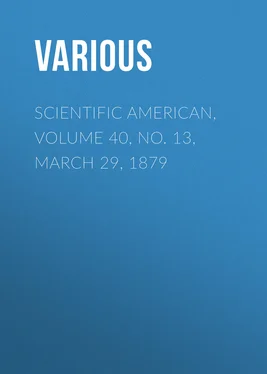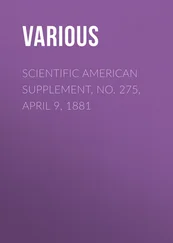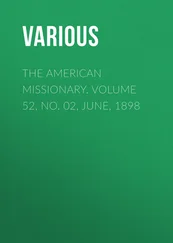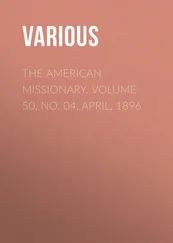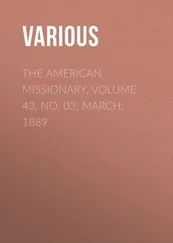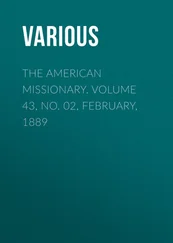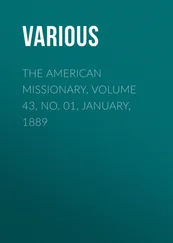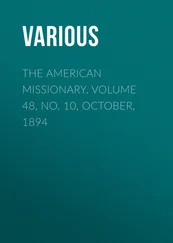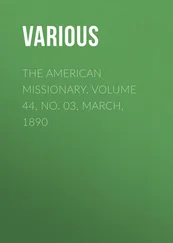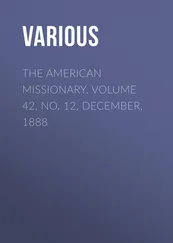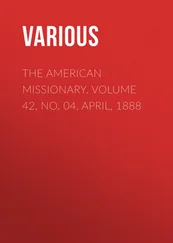Various - Scientific American, Volume 40, No. 13, March 29, 1879
Здесь есть возможность читать онлайн «Various - Scientific American, Volume 40, No. 13, March 29, 1879» — ознакомительный отрывок электронной книги совершенно бесплатно, а после прочтения отрывка купить полную версию. В некоторых случаях можно слушать аудио, скачать через торрент в формате fb2 и присутствует краткое содержание. Жанр: foreign_antique, periodic, foreign_edu, на английском языке. Описание произведения, (предисловие) а так же отзывы посетителей доступны на портале библиотеки ЛибКат.
- Название:Scientific American, Volume 40, No. 13, March 29, 1879
- Автор:
- Жанр:
- Год:неизвестен
- ISBN:нет данных
- Рейтинг книги:5 / 5. Голосов: 1
-
Избранное:Добавить в избранное
- Отзывы:
-
Ваша оценка:
- 100
- 1
- 2
- 3
- 4
- 5
Scientific American, Volume 40, No. 13, March 29, 1879: краткое содержание, описание и аннотация
Предлагаем к чтению аннотацию, описание, краткое содержание или предисловие (зависит от того, что написал сам автор книги «Scientific American, Volume 40, No. 13, March 29, 1879»). Если вы не нашли необходимую информацию о книге — напишите в комментариях, мы постараемся отыскать её.
Scientific American, Volume 40, No. 13, March 29, 1879 — читать онлайн ознакомительный отрывок
Ниже представлен текст книги, разбитый по страницам. Система сохранения места последней прочитанной страницы, позволяет с удобством читать онлайн бесплатно книгу «Scientific American, Volume 40, No. 13, March 29, 1879», без необходимости каждый раз заново искать на чём Вы остановились. Поставьте закладку, и сможете в любой момент перейти на страницу, на которой закончили чтение.
Интервал:
Закладка:
Unfortunately the torpedo boat was not ready in time to go with the ship carrying the contributions for Greece. It was stored in Mr. Cooper's factory (he had then turned his attention to glue) and was destroyed by the burning of the factory. It seems to have been quite a promising affair for the time. Mr. Cooper says:
"I experimented with it at once to see how far it could be guided. I made a steel wire ten miles long and went down to the Narrows to test the matter. I had steel yards fastened to one end of the wire, and to the other end the torpedo vessel as attached. It got about six miles away when a vessel coming into the harbor crossed the wire and broke it. Although the experiment was not complete it showed that for at least six miles I could guide the vessel as easily as I could guide a horse."
Mr. Cooper's work as the pioneer locomotive builder in this country; his later inventions and improvements in the manufacture of railway iron and wrought iron beams for fireproof buildings; his application of anthracite coal to iron puddling, and his other successes are almost as widely known as his philanthropic efforts for the education and advancement of the industrial classes of this city.
After all, we are not sure but the story of his long and varied and always honorable career, told by himself, would not be worth, to young people who have to make their way in life through many difficulties, more even than the advantages of the noble institution which bears his name.
Taste for Reading.—Sir John Herschel has declared that "if he were to pray for a taste which should stand under every variety of circumstance and be a source of happiness and cheerfulness to him through life, it would be a taste for reading." Give a man, he affirms, that taste, and the means of gratifying it, and you cannot fail of making him good and happy; for you bring him in contact with the best society in all ages, with the tenderest, the bravest, and the purest men who have adorned humanity, making him a denizen of all nations, a contemporary of all times, and giving him a practical proof that the world has been created for him, for his solace, and for his enjoyment.
Africa Crossed Again
Information has been received by way of Lisbon, March 12, that the Portuguese explorer, Pinto, has succeeded in traversing Africa from west to east, and has reached Transvaal. The latitude of his course across is not mentioned.
CURIOUS FACTS IN MAGNETISM
At the meeting of the New York Academy of Sciences February 17th, the article in the March number of Harper's Magazine , entitled "Gary's Magnetic Motor," was incidentally alluded to, and Prof. C. A. Seeley made the following remarks: The article claims that Mr. Gary has made a discovery of a neutral line or surface, at which the polarity of an induced magnet, while moving in the field of the inducing pole, is changed. The alleged discovery appears to be an exaggerated statement of some curious facts, which, although not new, are not commonly recognized. If a bar of iron be brought up, end on, near a magnetic pole, the bar becomes an induced magnet, but an induced magnet quite different from what our elementary treatises seem to predict. On the first scrutiny it is a magnet without a neutral point, and only one kind of magnetism—namely, that of the inducing pole. Moreover, the single pole is pretty evenly distributed over the whole surface, so that if iron filings be sprinkled on the bar they will be attracted at all points and completely cover it. Now, if while the bar is covered by filings it be moved away from the inducing pole, the filings will gradually and progressively fall, beginning at the end nearest the inducing pole and continuing to some point near the middle of the bar; the filings at the remote end will generally be held permanently. When the bar is carried beyond the field of the inducing pole it is simply a weak magnet of ordinary properties— i. e. , of two poles and a neutral point between them.
A plausible and simple explanation of this case is that the inducing pole holds or binds the induced magnetism of opposite name, so that it has no external influence; the two magnetisms are related to each other as are the positive and negative electricities of the Leyden jar. Let the inducing pole be N.; the S. of the bar will be attracted by it and bound, while the N. of the bar becomes abnormally free and active. On moving the bar from the pole the bound magnetism is released and a part becomes residual magnetism. Now when the residual balances the free magnetism which is of opposite name, we are on Gary's neutral line. In a restricted sense there is a change of polarity over the half of the bar contiguous to the inducing pole; on the other half there is no change of pole in any sense. Experiment with a shingle nail in the place of the filings, à la Gary, bring the nail to the induced bound pole, and it may be held, except at the neutral line. Now if one will read the magazine article with such ideas as these he will feel pretty sure that the writer of it has used words recklessly, that Gary has not made an original discovery, and that the "neutral" line, whatever it be, has only an imagined relation to the "principle" of the motor.
The Gary Motor as a perpetual motion scheme, of course, is not worthy of serious notice from a society devoted to science. It has no noteworthy novelty of construction or conception. Mr. Gary is afflicted with the very old delusion of the cut-off or shield of magnetism, which is to cost less than what comes from it. His cut-off is a sheet of iron, which we know acts simply as an armature.
A New Phenomenon in Statical Electricity
M. E. Duter, in a paper read before the French Academy in December, showed that when a Leyden jar is charged with either positive or negative electricity its internal volume increases, and that this effect is a new phenomenon, unexplainable by either a theory of an increase of temperature or of an electrical pressure. The experiment was performed by means of a flask-shaped Leyden jar with a long tube attached to its neck, and containing a liquid which served as the inner armature. The author's attention had been called to the fact that this phenomenon had been observed ten years ago by M. Gori.
His researches, just made public, leave no doubt of the accuracy of M. Duter's view, that the glass of the jar really expands. According to the theory of elasticity, the effect of an internal pressure in a hollow sphere is in the inverse ratio of its thickness. M. Duter, therefore, had three flasks made of the same volume, but of thicknesses of 4 mm., 0.8 mm., and 0.5 mm. respectively. They were filled with water and enveloped by tin foil. Each carried a capillary thermometer tube, in which the variations of the height of liquid served to measure the changes in volume due to electrification. He found that these changes were imperceptible in the thick glass, very marked in the flask of mean thickness, and rose to 30 mm. in the thinnest. The variations in volume were very nearly in inverse ratio of the square roots of the thicknesses.
A NEW ORE CRUSHER
The accompanying engravings represent an improved ore crusher, which is said to be very effective and economical in the use of power.
Fig. 1—BROWN'S ORE CRUSHER.
Fig. 2—HORIZONTAL SECTION.
A short vertical cast iron cylinder, A, having in one side a discharge opening, H, contains all of the movable parts.
The upper portion of the cylinder is lined with chilled iron plates, L, and an inclined chute, X, leads to the discharge opening, H.
A rigid shaft, B, carries the circular crusher, C, and moves in a ball and socket joint at the upper end, and extends eccentrically through the boss of a bevel wheel, G, at its lower end, and rests on a step supported by a lever that may be adjusted by the screw, R. The wheel, G, is driven by the pinion, P, on whose shaft there are a pulley and a fly-wheel.
Читать дальшеИнтервал:
Закладка:
Похожие книги на «Scientific American, Volume 40, No. 13, March 29, 1879»
Представляем Вашему вниманию похожие книги на «Scientific American, Volume 40, No. 13, March 29, 1879» списком для выбора. Мы отобрали схожую по названию и смыслу литературу в надежде предоставить читателям больше вариантов отыскать новые, интересные, ещё непрочитанные произведения.
Обсуждение, отзывы о книге «Scientific American, Volume 40, No. 13, March 29, 1879» и просто собственные мнения читателей. Оставьте ваши комментарии, напишите, что Вы думаете о произведении, его смысле или главных героях. Укажите что конкретно понравилось, а что нет, и почему Вы так считаете.
